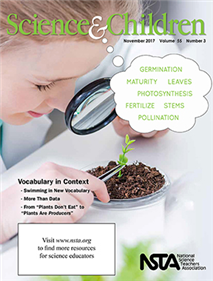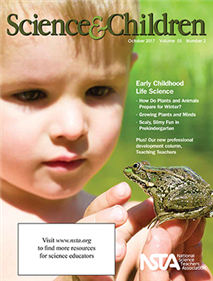All Elementary resources
Journal Article
Methods and Strategies: Time to Change
This column provides ideas and techniques to enhance your science teaching. This month’s issue discusses embedding literacy into the 5E while addressing the principles of the Next Generation Science Standards....
Journal Article
Teaching Teachers: Is It Worth It? Can I Do It?
This column enhances the repertoire of preservice and inservice teachers. An interactive word wall professional development explores how to build language proficiency during a science lesson....
Blog Post
Engineering: From Trial-and-Error to NGSS-Aligned
Four years ago, when the other seventh-grade science teacher and I started redesigning our curriculum for the NGSS, we knew we would have to include engineering. At that time, my understanding of engineering was pretty limited. I knew that engineers ...
By Cindy Workosky
Blog Post
As our first-grade class was returning to our classroom after recess, a learner directed our attention to our school’s newest retaining wall. He asked, “Why is the wall always falling apart on that side?”...
By Cindy Workosky
Blog Post
The Engineering Design Process: A Middle School Approach
To support the Next Generation Science Standards (NGSS) Middle School Engineering Design, we have three goals for our students: to define problems accurately, design the best solution using a rigorous process, and evaluate and improve their designs b...
By Cindy Workosky
Journal Article
Editor's Note: Revisiting the Framework: A Clear Pathway
Science and Children’s editor shares thoughts regarding the current issue....





